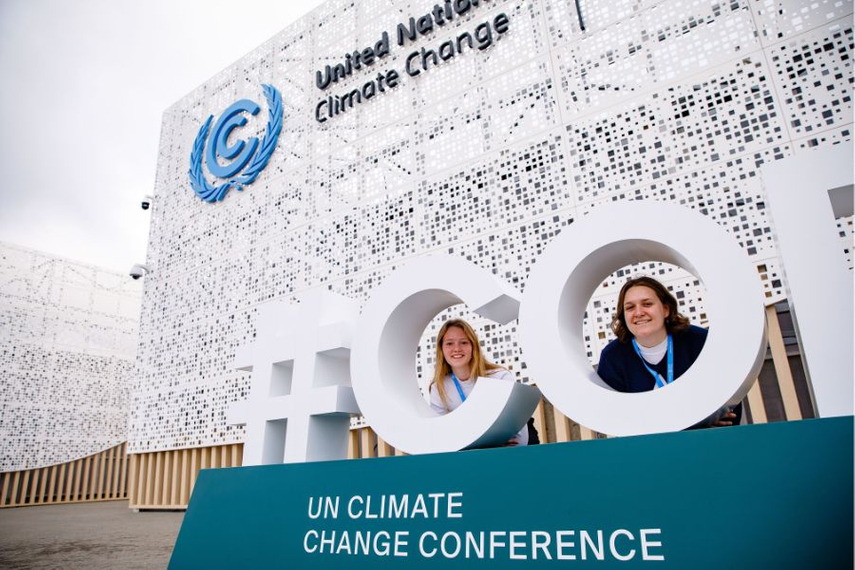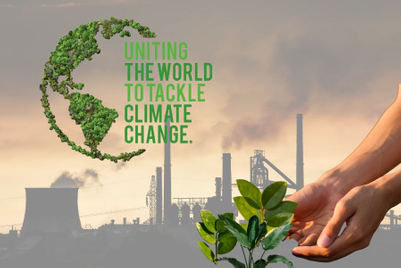
COP29 is here, and the stakes are clear—'Invest today to save tomorrow’. But let’s be honest, most brands are about as committed to that idea as they are to that one sad office plant nobody remembers to water.
In today’s world, slapping ‘sustainable’ on a label is like putting kale in a smoothie. Sure, it sounds healthy, but what’s actually in there?
As branding pros, we know that authenticity can’t just live in the messaging; it has to live in the DNA of the brand. So how can brands be more than green PR machines?
Let’s dig in, debunk some myths, and talk about what brand strategy truly looks like when it aligns with COP29’s vision for real, impactful change.
Myth #1: Green initiatives mean ‘job done’
Ah, the seductive allure of ‘green actions’ in the digital world. It sounds impressive, but in reality, many digital transformations that claim to cut emissions are surface-deep.
Digital transformations that claim to cut emissions are about as convincing as putting a salad on top of a burger and calling it a health food. Sure, the intentions are green, but the actual impact? Less so.
COP29’s Green Digital Action initiative sounds innovative, aiming to cut emissions from the tech industry. But for most brands, ‘digital sustainability’ often means nothing more than shifting paperwork online, or worse, hitting ‘like’ on a climate post. We know the truth: the carbon footprint of data storage alone is as heavy as that of airline travel. So, what are brands actually doing about it?
Take Google, for example. Sure, they champion renewable energy goals, but with ever-growing server demands, digital sustainability is far from achieved. Closer to home, Paytm’s eco-friendly claims for digital transactions sidestep the heavy server load that can offset those paper-saving benefits.
The brand strategy move: Digital carbon diet
Instead of playing catch-up with trendy digital solutions, brands should do a full audit of their digital assets. If they are serious, they could adopt a ‘digital carbon diet’, where data centres run on renewable energy, website loads are optimised to reduce digital waste, and each digital transaction is carbon-neutral. Now that is a great brand message and genuinely green.
Myth #2: People don’t care if sustainability is superficial
It’s tempting to think consumers don’t notice when sustainability is just a PR stunt. But today’s audiences, especially Gen Z and Millennials, are more eco-savvy and quick to call out greenwashing.
They’re like detectives scrolling through Instagram captions like, “Uh huh, ‘eco-friendly’? Prove it, Surfer Bro Excel.” And honestly, it’s hard to fool them.
COP29’s Baku Initiative on human development is forward-thinking, emphasising education and eco-literacy. It gives a chance for brands to lead by fostering environmental literacy instead of shallow campaigns.
Hindustan Unilever markets products like Surf Excel as water-saving, but critics argue that transparency about its full water footprint would go much further. Brands like Dabur, with their ‘natural’ image, are trusted for being eco-friendly, but unless they share the full story of ingredient sourcing and impact, consumers are only getting half of the sustainability picture.
The brand strategy move: Educators instead of advertisers
Brands should create a real ‘Green curriculum’ for consumers. Imagine campaigns that are less ‘buy our eco-product’ and more ‘here’s how to recycle, here’s how to use less, here’s how you can support clean energy in your city.’
Forget trying to sell them another eco-friendly ‘super-clean’ deodorant—they don’t just want you to freshen them up, they want you to freshen up the planet. Brands can start viewing themselves as educators rather than advertisers, engaging people in meaningful climate practices they can adopt daily.
Myth #3: Sustainable tourism is just for Instagram posts
COP29 has introduced ambitious targets for the tourism sector to cut emissions and ‘go green’. But here’s the irony: green tourism is often a high-cost experience wrapped in a luxury bow.
It’s like saying you’re ‘roughing it’ in a five-star eco-resort. Sure, you’re ‘one with nature’—as long as room service is one tap away.
Taj Hotels and ITC are known for luxurious, eco-friendly accommodations, but these are often accessible only to high-end travellers. Eco Retreat Odisha, however, promotes affordable, eco-conscious experiences that welcome a broader audience. Now that is what democratising sustainable tourism looks like.
The brand strategy move: All-inclusive
The real game-changer here is inclusivity. Brands should aim to democratise eco-friendly tourism by developing realistic, budget-friendly green travel options. Instead of exotic glamping and ‘sustainable resorts’ accessible to a wealthy few, brands could promote low-cost local experiences. Think urban eco-tours, budget eco-lodging, or virtual travel options that don’t involve flying. Show people that sustainable travel doesn’t have to be a fantasy. It’s accessible, realistic, and more than an Instagram post.
Myth #4: Green finance means brands are off the hook
Finally, we have the financial world, where COP29’s big push on ‘finance for climate’ would ideally mobilise serious funds to tackle real climate issues. But for many brands, this might mean nothing more than buying a few carbon offsets and calling it a day.
Too often, ‘green finance’ is a convenient way to keep doing the same old thing while sprinkling on a little planet-positive PR. It’s like eating cake every day and just donating to the local gym—nice thought, but maybe not making a dent in that carbon ‘waistline.’
Ola Electric, for example, promotes its scooters as ‘zero-emission’, though the production process still has a notable carbon footprint. Offsetting isn’t the same as reducing emissions at the source.
Similarly, Amazon has pledged to achieve net-zero emissions but relies heavily on carbon credits. However, critics argue this may not address their high-emission delivery model.
The brand strategy move: Climate positive investments
What if brands shifted from damage control to real climate-positive investments? Rather than buying offsets, they could fund local climate initiatives, support reforestation projects that they manage and measure, or invest in renewable energy tech for their supply chains. This way, they’re not just patching up a problem—they’re creating a model of what sustainable finance can really look like.
COP29 and beyond: From PR strategy to planet strategy
Brands relying on empty PR stunts risk losing credibility in a world where consumers are increasingly eco-aware. COP29 is a call to reset the narrative—to make sustainability more than a checkbox, but a genuine brand pillar rooted in action, accountability, and humility. The time for greenwashing is over, and the time for green doing is now.
The true challenge? Moving from PR to purpose. A brand’s loyalty lies in real commitment, with authenticity as the ultimate competitive edge. And if a brand can’t do sustainability right, perhaps it’s better not to do it at all.
If COP29 teaches us anything, it’s that our job as branding experts is to push beyond the surface, take the climate conversation deeper, and create strategies that stand up to scrutiny. Because, let’s be real—consumers are loyal, but not that loyal.
They’ll jump ship faster than you can say ‘biodegradable packaging’ if they catch a whiff of pretense. So let’s do it right. Make ‘green’ mean something that doesn’t just fade out in the wash. That’s the kind of brand loyalty that will last—right into tomorrow, and for every tomorrow after that.
 - Kunal Vora, founder and partner, ABND.
- Kunal Vora, founder and partner, ABND.



.png&h=268&w=401&q=100&v=20250320&c=1)
.jpg&h=268&w=401&q=100&v=20250320&c=1)
.jpg&h=268&w=401&q=100&v=20250320&c=1)
.jpeg&h=268&w=401&q=100&v=20250320&c=1)
.png&h=268&w=401&q=100&v=20250320&c=1)
.png&h=268&w=401&q=100&v=20250320&c=1)

